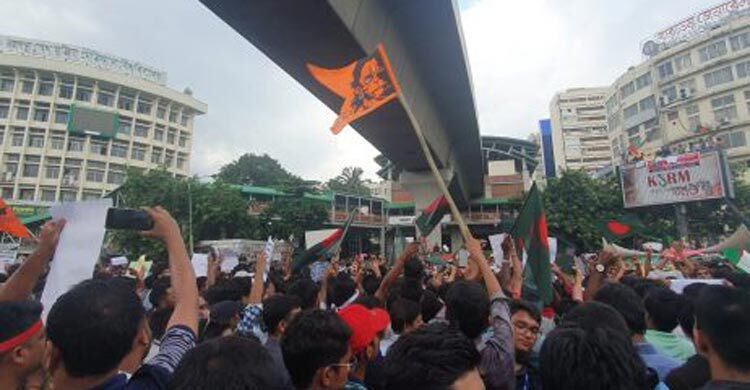Rise of BJP’s Hindutva in Bangladesh

In recent months, the influence of Hindutva ideology—closely associated with India's ruling Bharatiya Janata Party (BJP) and its ideological parent, Rashtriya Swayamsevak Sangh (RSS)—has seen a notable rise in Bangladesh.
This development has sparked debate, protests, and significant political shifts within the country's minority Hindu community, Snigdhendu Bhattacharya on The Diplomat magazine.
Hindu protests amid political turmoil
On August 9, a day after Nobel laureate Muhammad Yunus assumed charge as the head of Bangladesh’s interim government, thousands of Hindus—a religious minority comprising 8% of Bangladesh's population—protested across the nation, including in Dhaka’s Shahbagh Square. The protests followed a series of attacks on Hindu homes, businesses, and temples during the political chaos after Prime Minister Sheikh Hasina's resignation on August 5.
Traditional minority rights organisations like the Bangladesh Hindu Buddhist Christian Unity Council and the Bangladesh Puja Udjapan Parishad initially led these demonstrations, demanding safety and justice. However, the emergence of slogans like "Jai Shree Ram"—a controversial chant linked to India's Hindu nationalist forces—marked a significant shift.
Formation of Bangladesh Hindu Jagran Manch
By August 11, a new platform, Bangladesh Hindu Jagran Manch (BHJM), was formed, with leaders like Nihar Haldar and Chinmoy Das gaining prominence. The name and activities of BHJM bore striking similarities to India’s Hindu Jagran Manch, an RSS-affiliated organization.
Over the following weeks, BHJM grew in prominence, eclipsing traditional minority rights groups. Key organizers of BHJM had ties to Hindu nationalist organizations like the Bangladesh Jayito Hindu Mahajote (BJHM), founded in 2006, which is often credited with introducing Hindutva ideology to Bangladesh.
Cross-border influence and controversy
The influence of India’s Hindutva ideology became evident through the activities of BHJM leaders. Nihar Haldar, a prominent figure, visited India in September, meeting several BJP leaders, including former Tripura Governor Tathagata Roy and Bengal BJP legislator Asim Sarkar. Haldar’s trip led to a split within BHJM, with one faction renaming itself as Bangladesh Sanatan Jagran Manch (BSJM) and distancing itself from Haldar.
Despite the split, both factions continued to organize protests, with slogans like "Jai Shree Ram" becoming a flashpoint. Critics argued that the slogan, associated with anti-Muslim violence in India, was inappropriate in Bangladesh’s context. However, Chinmoy Das defended it, comparing it to religious slogans used by Islamic groups, claiming it represented Hindu resistance.
Roots of Hindutva in Bangladesh
Political analysts trace the origins of Hindutva ideology in Bangladesh to the establishment of BJHM in 2006. Over the years, the BJHM and its affiliates adopted elements of India’s Hindutva movement, such as organizing Ram Navami celebrations and promoting slogans like "Jai Shree Ram."
The BJHM’s activities mirrored those of RSS-affiliated organizations in India, including adopting symbols like the "Angry Hanuman" and campaigns against "Love Jihad." By 2022, both factions of BJHM had begun grand-scale celebrations of Hindu festivals, emphasizing Hindutva ideology.

